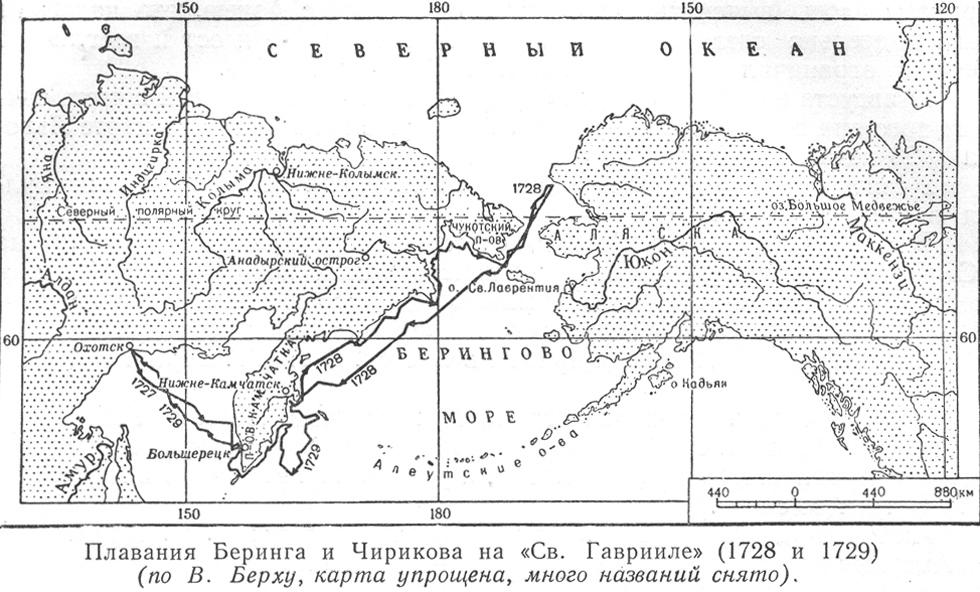Russia’s Peter the Great was curious. Did anything divide Siberia from North America? Only a month before he died, Peter the Great commissioned one of his naval officers to answer this question. The Danish born Vitus Jonassen Bering, accompanied by his assistant lieutenant and navigator Aleksei Chirikov, led the St. Gabriel on the First Kamchatka Expedition from 1725 to 1730. In August of 1728, the ships passed between the two continents, confirming the separation in the North Pacific, now known as the Bering Strait.

The path of the First Kamchatka Expedition, map by Vasily Berkh. Public Domain






